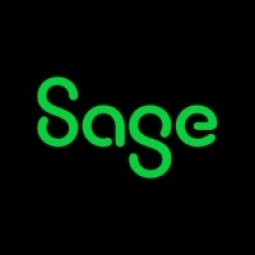Customer Company Size
SME
Region
- America
Country
- United States
Product
- Sage 300
- Sage CRM
Tech Stack
- Accounting Software
- CRM Software
Implementation Scale
- Enterprise-wide Deployment
Impact Metrics
- Productivity Improvements
- Customer Satisfaction
Technology Category
- Functional Applications - Enterprise Resource Planning Systems (ERP)
Applicable Functions
- Logistics & Transportation
- Sales & Marketing
Use Cases
- Supply Chain Visibility
- Inventory Management
Services
- System Integration
About The Customer
RTI Hotel Supply, Inc. is a company that provides specialized procurement services to the hospitality industry. The company primarily focuses on the Caribbean and Latin American marketplace and has built a solid reputation as a single-source provider of high-quality products. A second division of the company builds customized hotel furnishings including vanities, casework, and seating. The company has a professional and experienced staff that delivers personalized service, which keeps its customers returning time and time again. RTI Hotel Supply has relied on Sage 300 as its accounting and distribution software since its inception and recently added Sage CRM to give the company a 360-degree view of its customers and its operations.
The Challenge
RTI Hotel Supply, Inc. has been providing specialized procurement services to the hospitality industry since 1989. The company focuses primarily on the Caribbean and Latin American marketplace and has built a solid reputation as a single-source provider of high-quality products. A second division builds customized hotel furnishings including vanities, casework, and seating. The company had relied on Sage 300 as its accounting and distribution software, but had neglected to update the software for several years. Rapid growth, including the opening of several international offices, ultimately prompted the company to invest in its technology infrastructure and to update its system to the most current level.
The Solution
RTI Hotel Supply decided to update its Sage 300 system to the most current level to accommodate its rapid growth and the opening of several international offices. The company also added Sage CRM to give it a 360-degree view of its customers and operations. Sage 300 delivers the information warehouse personnel need to consolidate orders to minimize freight charges. The software also has tools to help maintain the perfect balance of inventory, showing which items are moving and which are not. The company can compare current sales with historical sales and make seasonal adjustments to ensure that it has the right mix on hand. Sage CRM synchronizes with Microsoft® Outlook®, so all of the company's calendar appointments and emails are up to date in both places.
Operational Impact
Quantitative Benefit

Case Study missing?
Start adding your own!
Register with your work email and create a new case study profile for your business.
Related Case Studies.

Case Study
Remote Temperature Monitoring of Perishable Goods Saves Money
RMONI was facing temperature monitoring challenges in a cold chain business. A cold chain must be established and maintained to ensure goods have been properly refrigerated during every step of the process, making temperature monitoring a critical business function. Manual registration practice can be very costly, labor intensive and prone to mistakes.

Case Study
Hospital Inventory Management
The hospital supply chain team is responsible for ensuring that the right medical supplies are readily available to clinicians when and where needed, and to do so in the most efficient manner possible. However, many of the systems and processes in use at the cancer center for supply chain management were not best suited to support these goals. Barcoding technology, a commonly used method for inventory management of medical supplies, is labor intensive, time consuming, does not provide real-time visibility into inventory levels and can be prone to error. Consequently, the lack of accurate and real-time visibility into inventory levels across multiple supply rooms in multiple hospital facilities creates additional inefficiency in the system causing over-ordering, hoarding, and wasted supplies. Other sources of waste and cost were also identified as candidates for improvement. Existing systems and processes did not provide adequate security for high-cost inventory within the hospital, which was another driver of cost. A lack of visibility into expiration dates for supplies resulted in supplies being wasted due to past expiry dates. Storage of supplies was also a key consideration given the location of the cancer center’s facilities in a dense urban setting, where space is always at a premium. In order to address the challenges outlined above, the hospital sought a solution that would provide real-time inventory information with high levels of accuracy, reduce the level of manual effort required and enable data driven decision making to ensure that the right supplies were readily available to clinicians in the right location at the right time.







